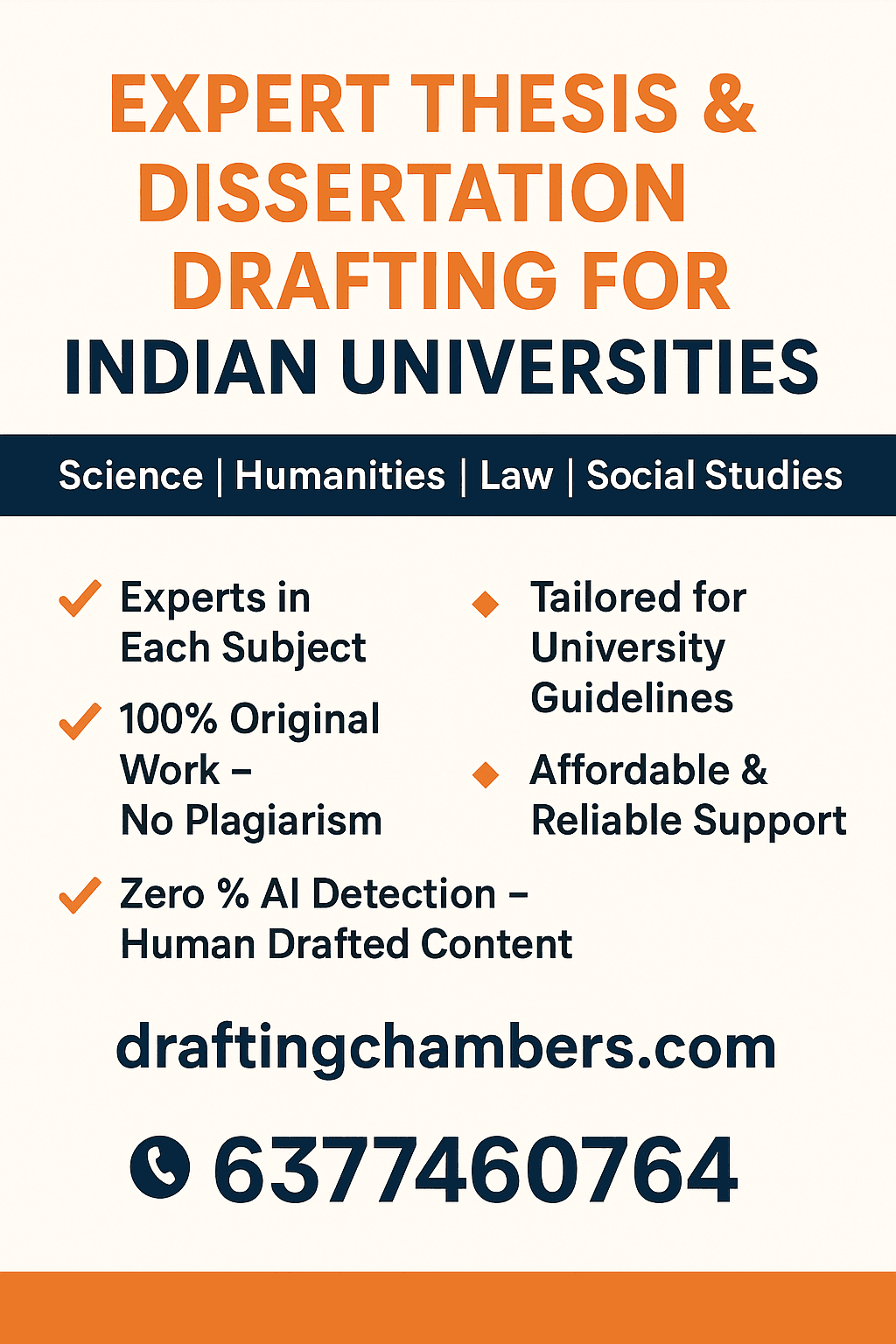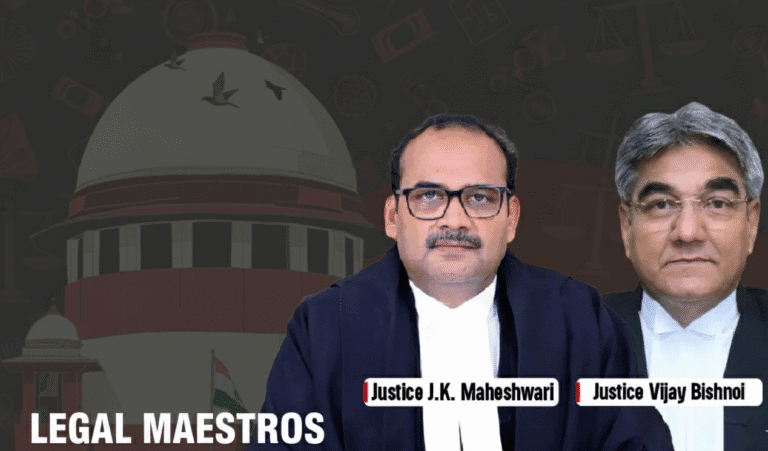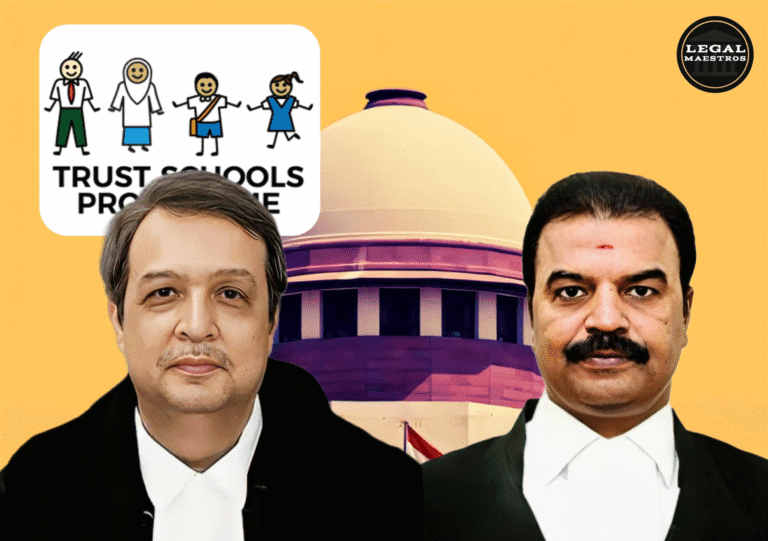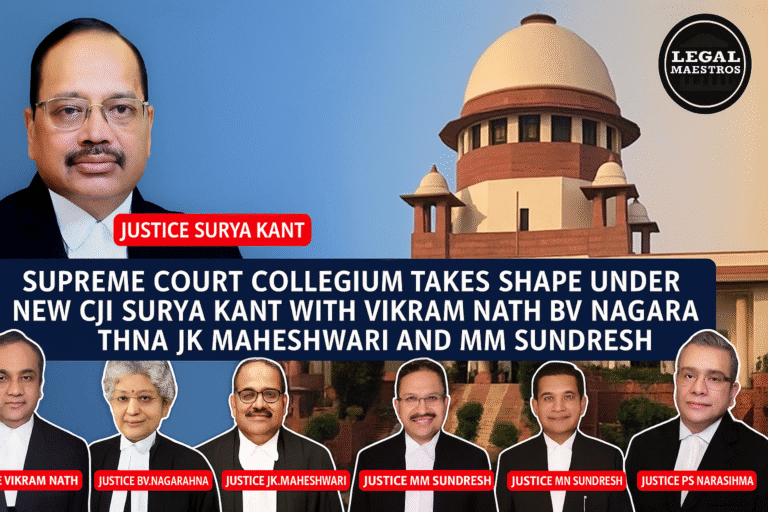
https://api.sci.gov.in/supremecourt/2025/32670/32670_2025_8_1504_63019_Judgement_05-Aug-2025.pdf
Presided by: Justice B.R. Gavai, Justice Sandeep Mehta, Supreme Court
Appellant: Union of India & Ors.
For any queries or to publish an article or post or advertisement on our platform, do call at +91 6377460764 or email us at contact@legalmaestros.com.
Respondent: S. Subramaniyan & Ors.
On August 5, 2025, the Supreme Court of India upheld the right of retirees to interest on postponed retirement benefits, holding the Union of India responsible for nonpayment of these obligations.
Relevant Laws and Constitutional Provisions
Numerous statutory frameworks, administrative processes, and constitutional provisions are all involved in this case. The right to equality is protected by Article 14 of the Indian Constitution; the right to life and personal freedom is protected by Article 21; and the right to constitutional remedies is protected by Article 32. Articles 124(4)–(5), which outline the procedure for dismissing Supreme Court judges, and Articles 217 and 218—which outline the procedure for dismissing High Court judges—are also relevant. Furthermore, Articles 121 and 211 limit parliamentary discussions regarding the conduct of judges. The Judges (Inquiry) Act of 1968, which regulates the process for investigating judicial misconduct, and the Judges (Protection) Act of 1985, which provides judges with immunity for acts committed while holding their official position. Administratively, it is also shaped by the Supreme Court’s Full Court’s 1999 adoption of the “In-House Procedure,” which serves as a self-regulatory mechanism to uphold judicial discipline.
Factual Background
A March 2025 fire at the petitioner’s official residence resulted in the discovery of burned currency notes in a storeroom. This incident allegedly involved a violation of the Restatement of Values of Judicial Life, the judicial code of conduct. In compliance with the “In-House Procedure” of 1999, the Chief Justice of India formed a three-member committee to investigate the alleged misconduct. The committee concluded that the petitioner had committed “serious misconduct” and recommended that removal procedures be initiated in its report, which was submitted on May 3, 2025. The following day, the Chief Justice sent the report to the President and the Prime Minister and advised the petitioner to resign. These actions were challenged by the petitioner, who claimed that Paragraphs 5(b) and 7(ii) of the In-House Procedure, asserting that the public release of evidence, including photographs and videos, had undermined the investigation’s objectivity and caused violations of Articles 14, 21, and 124–218 of the Constitution because due process had not been followed.
Judgement
The Supreme Court upheld the constitutionality of the In-House Procedure (1999) in C. Ravichandran Iyer v. Justice A.M. Bhattacharjee, finding that it fills a “yawning gap” by addressing judicial misconduct that does not qualify as impeachable offences. The Court emphasised that the procedure is a preliminary fact-finding exercise rather than a finding of guilt, with support from Article 141 of the Constitution and Section 3(2) of the Judges (Protection) Act 1985, which permits “other proceedings” against judges. This led to the upholding of paragraphs 5(b), which allows the Chief Justice of India (CJI) to recommend removal, and 7(ii), which allows the report to be forwarded to the President and Prime Minister.
The Court clarified that this type of recommendation is an internal safeguard to preserve institutional integrity rather than a “parallel constitutional mechanism” with regard to the role of the CJI. It was determined that sending the report to the President, who acts as the appointing authority, was both reasonable and constitutional given that “The CJI is not a mere post office… [His] role is pivotal in maintaining institutional credibility.”
Regarding public disclosure, the Court found that the posting of photos and videos from the investigation on the Supreme Court’s website violated the confidentiality principle established in Indira Jaising v. Supreme Court of India. However, by actively participating in the investigation and failing to object sooner, the petitioner waived this challenge.
The Court reiterated that because In-House Procedure investigations are preliminary, non-punitive, and confidential, they function as a screening tool without taking the place of the constitutional process of removal through parliamentary impeachment. Due to his tardiness in filing the writ petition and his compliance with the procedure, the petitioner was further denied relief. Finally, the Court decided that judges who engage in serious misconduct are subject to disciplinary action, despite Section 3(2) of the Judges (Protection) Act 1985 allows proceedings under the In-House Procedure.
Final Outcome
Writ Petition Refused: There was no infringement of the petitioner’s constitutional rights.
The In-House Procedure and the legality of CJI’s actions were maintained.







